The automotive market has recently seen a surge in interest for compact SUVs, with consumers looking for a blend of practicality, efficiency, and innovation. Two vehicles that stand out in this category are the MG ZS and the Toyota Yaris Cross. While both offer a unique set of features, they cater to different priorities among drivers. In this article, we will compare these two models on various aspects, including performance, technology, and fuel efficiency.
MG ZS vs Toyota Yaris Cross – Differences & prices compared
Two cars, one duel: MG ZS meets Toyota Yaris Cross.
Which one wins in performance, efficiency and value for money? Find out now!
Performance and Engine Options
The MG ZS offers a promising array of engine options, boasting both electric and hybrid variants. The electric models provide impressive power outputs, ranging from 156 to 197 HP, coupled with a torque of 280 Nm. This SUV accelerates from 0-100 km/h in a remarkable time of 8.6 seconds while achieving a top speed of 175 km/h. The ZS also stands out with an electric range of up to 440 km thanks to its 65.7 kWh battery capacity, making it suitable for longer journeys.
On the other hand, the Toyota Yaris Cross comes equipped with a full hybrid engine that offers a more modest power range of 116 to 130 HP and an engine capacity of 1490 cm³. The acceleration from 0-100 km/h is slightly slower at around 11.2 seconds, with a maximum speed capped at 170 km/h. Despite these numbers, the Yaris Cross impresses with its fuel consumption figures, averaging 4.5 to 4.8 L/100km, which is highly competitive in its class.
Fuel Efficiency and Eco-Friendliness
In terms of fuel efficiency, the MG ZS holds its ground well, especially the electric variant with a consumption of 17.3 to 17.8 kWh/100km. However, the hybrid-driven Toyota Yaris Cross takes the lead when it comes to traditional fuel efficiency, consuming just 4.5 to 4.8 L/100km. In terms of CO2 emissions, the MG ZS’s electric models are rated at 0 g/km, providing an eco-friendly option, while the hybrid Yaris Cross scores between 101 to 108 g/km, placing it in the C efficiency class.
Dimensions and Practicality
When it comes to size, the MG ZS measures 4323 mm in length, 1809 mm in width, and stands at 1649 mm in height. Its generous trunk capacity of 448 L offers ample room for luggage or shopping, making it a practical choice for families or weekend trips. The rear seat space also accommodates up to five passengers comfortably.
The Toyota Yaris Cross, slightly smaller at 4180 mm in length and 1765 mm in width, has a height of 1595 mm. Despite its smaller stature, it remains practical, offering trunk capacities of 320 L to 397 L depending on the configuration. Both models cater to families with five seats, ensuring passenger comfort and adequate storage.
Innovative Features and Technology
Both the MG ZS and the Toyota Yaris Cross come equipped with a host of modern technology and safety features. The ZS is known for its user-friendly infotainment system, which includes large touch screens, smartphone integration capabilities, and an advanced safety suite featuring lane departure warnings and adaptive cruise control.
Meanwhile, the Yaris Cross places a strong emphasis on safety and hybrid technology, featuring advanced driver assistance systems and Toyota's well-regarded safety reputation. The Yaris Cross also offers attractive tech options like touch display navigation, smartphone connectivity, and voice command features, enhancing the driving experience for tech-savvy consumers.
Conclusion
Deciding between the MG ZS and the Toyota Yaris Cross ultimately comes down to individual preferences and priorities. If power, electric capabilities, spaciousness, and competitive acceleration are your focus, the MG ZS stands out as a compelling choice. Alternatively, if you prioritize fuel economy, low emissions, and trusted safety features, the Toyota Yaris Cross may be the better option. Both vehicles demonstrate innovation and performance in the thriving compact SUV market, allowing consumers to select the model that best aligns with their lifestyles.
Here’s where it gets real: The technical differences in detail
Costs and Efficiency:
Price and efficiency are often the first things buyers look at. Here it becomes clear which model has the long-term edge – whether at the pump, the plug, or in purchase price.
MG ZS has a distinct advantage in terms of price – it starts at 18000 £, while the Toyota Yaris Cross costs 23700 £. That’s a price difference of around 5700 £.
Fuel consumption also shows a difference: Toyota Yaris Cross manages with 4.50 L and is therefore slightly more efficient than the MG ZS with 5 L. The difference is about 0.50 L per 100 km.
Engine and Performance:
Power, torque and acceleration are the classic benchmarks for car enthusiasts – and here, some clear differences start to show.
When it comes to engine power, the MG ZS has a evident edge – offering 197 HP compared to 130 HP. That’s roughly 67 HP more horsepower.
In acceleration from 0 to 100 km/h, the MG ZS is clearly perceptible quicker – completing the sprint in 8.70 s, while the Toyota Yaris Cross takes 10.70 s. That’s about 2 s faster.
In terms of top speed, the MG ZS performs minimal better – reaching 179 km/h, while the Toyota Yaris Cross tops out at 170 km/h. The difference is around 9 km/h.
Space and Everyday Use:
Cabin size, boot volume and payload all play a role in everyday practicality. Here, comfort and flexibility make the difference.
Both vehicles offer seating for 5 people.
In curb weight, Toyota Yaris Cross is slightly lighter – 1180 kg compared to 1330 kg. The difference is around 150 kg.
In terms of boot space, the MG ZS offers a bit more room – 443 L compared to 397 L. That’s a difference of about 46 L.
In maximum load capacity, the MG ZS performs noticeable better – up to 1457 L, which is about 360 L more than the Toyota Yaris Cross.
When it comes to payload, Toyota Yaris Cross hardly perceptible takes the win – 510 kg compared to 470 kg. That’s a difference of about 40 kg.
Who comes out on top?
Overall, the MG ZS shows itself to be leaves the rival little chance and secures the title of DriveDuel Champion.
It convinces with the more balanced overall package and proves to be the more versatile choice for everyday use.
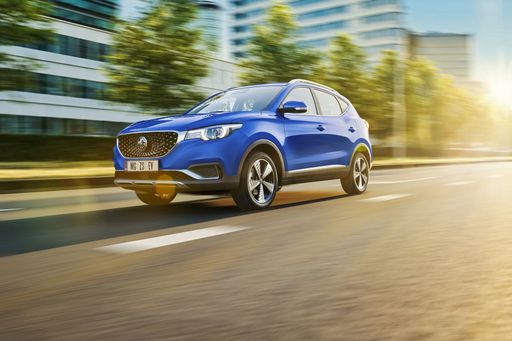 @ MG Motor / SAIC Motor Corporation
@ MG Motor / SAIC Motor Corporation
MG ZS
MG ZS
The MG ZS presents itself as a practical and stylish compact SUV, ideal for those seeking comfort and functionality at an affordable price. With its spacious interior and modern design, it caters to both family and solo adventures, providing ample storage space and user-friendly technology. Additionally, the vehicle's efficient performance and refined drive make it a compelling choice for urban and motorway journeys alike.
details @ MG Motor / SAIC Motor Corporation
@ MG Motor / SAIC Motor Corporation
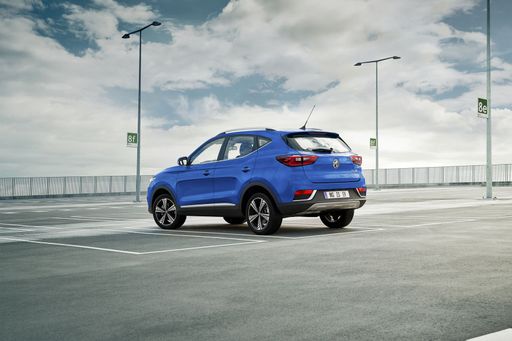 @ MG Motor / SAIC Motor Corporation
@ MG Motor / SAIC Motor Corporation
 @ MG Motor / SAIC Motor Corporation
@ MG Motor / SAIC Motor Corporation
 @ MG Motor / SAIC Motor Corporation
@ MG Motor / SAIC Motor Corporation
 @ MG Motor / SAIC Motor Corporation
@ MG Motor / SAIC Motor Corporation
Toyota Yaris Cross
The Toyota Yaris Cross takes the jaunty personality of the Yaris and gives it a taller stance and a bit more practicality, so you get city-friendly agility with added SUV presence. It’s easy to live with, economical on the daily grind, and smartly packaged — a sensible pick for buyers who want fuss-free transport with a touch of character.
details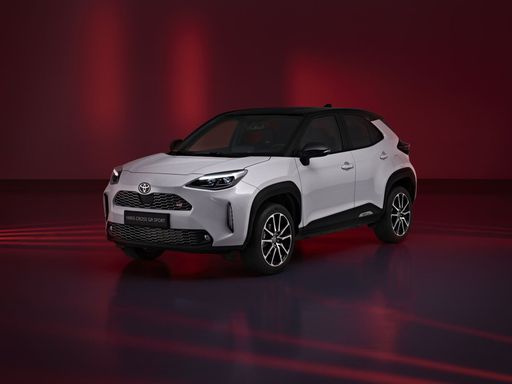 @ Toyota Motor Corporation
@ Toyota Motor Corporation
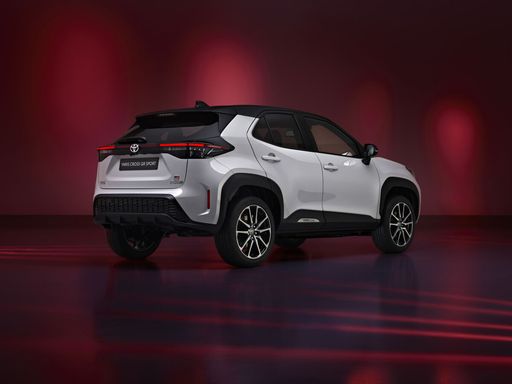 @ Toyota Motor Corporation
@ Toyota Motor Corporation
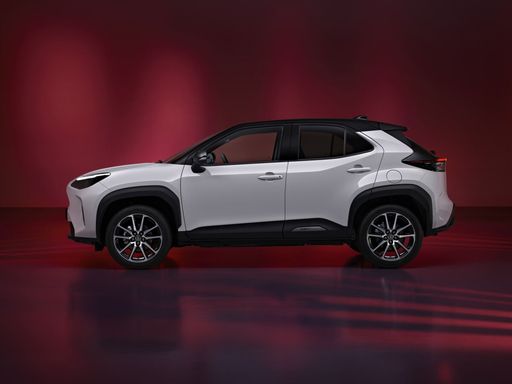 @ Toyota Motor Corporation
@ Toyota Motor Corporation
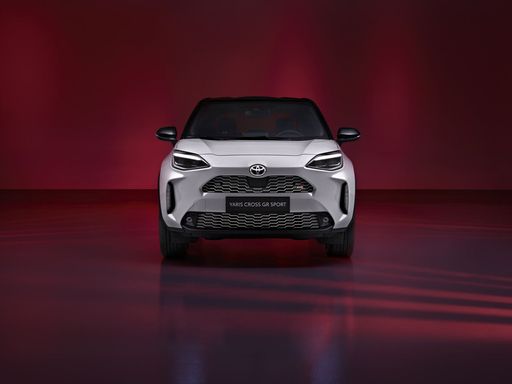 @ Toyota Motor Corporation
@ Toyota Motor Corporation
 @ Toyota Motor Corporation
@ Toyota Motor Corporation
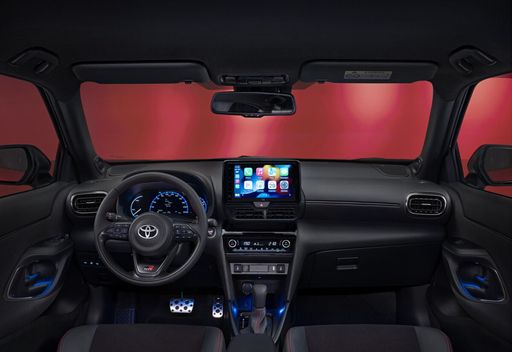 @ Toyota Motor Corporation
@ Toyota Motor Corporation
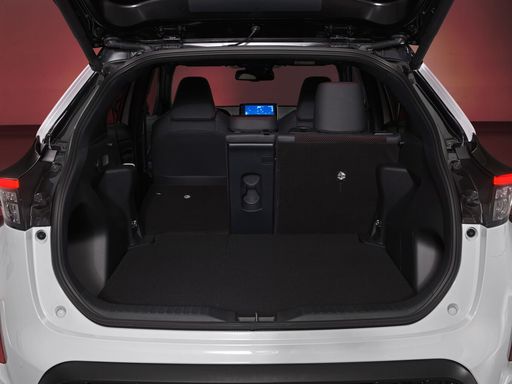 @ Toyota Motor Corporation
@ Toyota Motor Corporation
 @ MG Motor / SAIC Motor Corporation
@ MG Motor / SAIC Motor Corporation
|
 @ Toyota Motor Corporation
@ Toyota Motor Corporation
|
|
|
|
Costs and Consumption |
|
|---|---|
|
Price
18000 - 23100 £
|
Price
23700 - 34300 £
|
|
Consumption L/100km
5 - 6.5 L
|
Consumption L/100km
4.5 - 4.8 L
|
|
Consumption kWh/100km
-
|
Consumption kWh/100km
-
|
|
Electric Range
-
|
Electric Range
-
|
|
Battery Capacity
-
|
Battery Capacity
-
|
|
co2
113 - 145 g/km
|
co2
101 - 108 g/km
|
|
Fuel tank capacity
41 - 55 L
|
Fuel tank capacity
36 L
|
Dimensions and Body |
|
|---|---|
|
Body Type
SUV
|
Body Type
SUV
|
|
Seats
5
|
Seats
5
|
|
Doors
5
|
Doors
5
|
|
Curb weight
1330 - 1420 kg
|
Curb weight
1180 - 1290 kg
|
|
Trunk capacity
443 L
|
Trunk capacity
320 - 397 L
|
|
Length
4430 mm
|
Length
4180 mm
|
|
Width
1818 mm
|
Width
1765 mm
|
|
Height
1635 mm
|
Height
1595 mm
|
|
Max trunk capacity
1457 L
|
Max trunk capacity
1097 L
|
|
Payload
375 - 470 kg
|
Payload
485 - 510 kg
|
Engine and Performance |
|
|---|---|
|
Engine Type
Full Hybrid, Petrol
|
Engine Type
Full Hybrid
|
|
Transmission
Automatic, Manuel
|
Transmission
Automatic
|
|
Transmission Detail
Automatic Gearbox, Manual Gearbox
|
Transmission Detail
CVT
|
|
Drive Type
Front-Wheel Drive
|
Drive Type
Front-Wheel Drive, All-Wheel Drive
|
|
Power HP
116 - 197 HP
|
Power HP
116 - 130 HP
|
|
Acceleration 0-100km/h
8.7 - 12.5 s
|
Acceleration 0-100km/h
10.7 - 11.3 s
|
|
Max Speed
168 - 179 km/h
|
Max Speed
170 km/h
|
|
Torque
148 Nm
|
Torque
-
|
|
Number of Cylinders
4
|
Number of Cylinders
3
|
|
Power kW
85 - 145 kW
|
Power kW
85 - 96 kW
|
|
Engine capacity
1495 - 1498 cm3
|
Engine capacity
1490 cm3
|
General |
|
|---|---|
|
Model Year
2024 - 2025
|
Model Year
2024 - 2025
|
|
CO2 Efficiency Class
C, E
|
CO2 Efficiency Class
C
|
|
Brand
MG
|
Brand
Toyota
|
What drive types are available for the MG ZS?
The MG ZS is available as Front-Wheel Drive.
The prices and data displayed are estimates based on German list prices and may vary by country. This information is not legally binding.
